A Riq, a djembe, and 4 tars walk into a bar…
Riq says, “Play it again, Sam.” Get it? Riq says? Casablanca? Ok, moving on…
I’ll wrap up the series of blog posts on my new works published by Bachovich with three works for hand drums; Merck’s Tattoo for solo riq, Kirina Dreams for solo djembe with ksink-ksink, and Maqsumed for frame drum quartet.
Merck’s Tattoo for solo riq, written for Kyle Merck, is one of several works I’ve composed for students to perform on recitals. The piece is loosely based on funk-style drumset rhythms, with brief references to the bell pattern used in the West African Ewe dance “Gahu.” The title is inspired by a very distinctive tattoo that Kyle Merck sports on the underside of his left wrist. It occurred to me that every time Kyle plays the riq, he has a clear view of his special tattoo.
Kirina Dreams, written for Jonathan Harris, is based on the Malian rhythm called Madan, traditionally played to celebrate the millet harvest. According to master djembefola Sidi Mohamed “Joh” Camara, Madan originated in the village of Kirina in the Koulikoro region of Mali, near the Guinean border. Kirina holds a special place in the history of the Mande people, as it is the location of the famous battle of Kirina, where Sundiata Keita defeated the Sosso king Sumanguru Kante in 1235 to mark the beginning of the Great Mali Empire. Legend has it that Sundiata overcame tremendous adversity in his rise to become king of one of the greatest civilizations in history. Sundiata’s story is a classic tale of the hero’s journey, recounted for generations and capturing the dreams and imaginations of young and old alike.
This solo requires the use of added jingle plates called ksink-ksink (also called “kashink-kashink” or “seke-seke”). These fan-shaped shakers are inserted between the tensioning ropes of the djembe and typically vibrate sympathetically in a manner similar to the snares on a snare drum. In Kirina Dreams, they are also played directly with the hands. It is said that ksink-ksink represent the shields once used to protect drummers during battle as they oversaw the battlefield and drummed messages to the troops.
In the spirit of Steve Reich’s Music for Pieces of Wood, Maqsumed (as in “consumed”) employs a system of building up fragments of permuted rhythms derived from the traditional Arabic rhythm Maqsum. The number of repeats in each bar is not fixed. It may vary within the approximate limits marked in each bar (e.g. bar 1 may be repeated 4-6 times, then player two enters at bar 2 for about 5-9 repeats and so on). The indications for approximate numbers of repeats are written above the part responsible for making the particular change in each bar (e.g. player 2 is responsible for bars 2 through 8 since player one repeats without changing in those bars), and consequently the approximate number of repeats (5-9) is written above player two’s part, and similarly throughout the piece. Once a player’s rhythm has completed its build-up process, a decrescendo is indicated with an approximate number of repeats (e.g. 3-4) in which to accomplish the dynamic change in order for the player’s part to meld into the prevailing timbre and allow the next player’s entrances to stand out. This piece may be performed using any frame drum (tar, bendir, bodhran, riq, etc.) or combinations of drums as desired. The piece may also be played on doumbek or any sounding source capable of producing the three sounds (dum, tak, slap).
Merck’s Tattoo, Kirina Dreams, and Maqsumed are avialable now at www.bachovich.com.


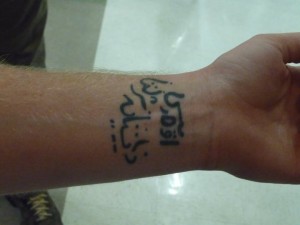








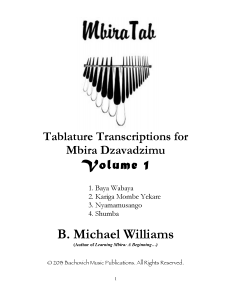
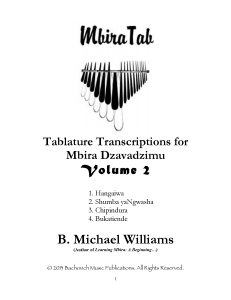
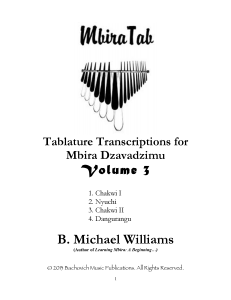
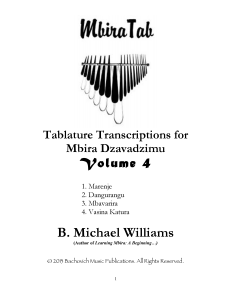



Recent Comments